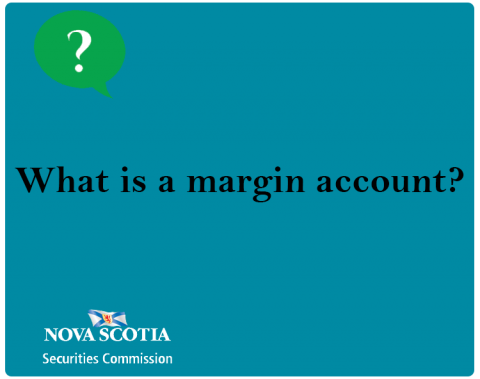Submitted by nsscadmin on

A margin account is a brokerage account in which the broker loans the investor money to purchase stocks and other investments. The investments purchased and money remaining in the account are collateral for the loan and the investor is also charged interest on the loan. Since the investor is investing with borrowed money, they are using leverage which can increase profits and losses on the account. By investing on margin, you are using leverage. When using leverage you are investing with borrowed money to try and increase your potential returns on an investment. We’ll show how this may be possible in an example later in this post.
The Nova Scotia Securities Commission does not provide investment advice. We are not advising or recommending investors to use leverage. This post is simply to educate investors on how margin works so they can be an informed investor when working with their adviser and making investment decisions.
Use of margin accounts entail a high amount risk and the use of leverage and may not be suitable for you. You should consult with a registered investment advisor before considering opening a margin account.
When purchasing investments with a margin account, an investor cannot pay for all of the investment with borrowed money. There is a percentage set by regulators that must be paid with unborrowed money. Even with these regulations in place, investing with borrowed money can be extremely risky.
Let’s look at an example of how investing on a margin account can be lucrative and can also cause you to lose some or all of your money. To keep it simple, in our example, we will not include the interest rate on the borrowed money, but remember that it would be charged.
An investor wants to purchase 1000 shares in Company X. The shares are currently priced at $100 per share. The total investment will cost $100,000. The investor has $50,000 in cash and borrows the other $50,000 of the investment on margin.
In the future the stock price of Company X increases to $200 per share. The investor sells their 1000 shares for $200,000. They pay off their loan and have a balance of $150,000. The investor has a return of 200% on their cash balance of $50000. If they had invested without margin, they would have a return of 100%.
However, prices do not always go up. What if the share price of Company X fell to $50? In this case the investors shares are now worth only $50,000. If they were to sell at this price, they would only have enough to pay off their loan and they would lose their entire investment, a 100% loss. Without investing on margin, the investors would have lost only half their money by making the same investment, a 50% loss.
The returns above may be different depending on the interest rate charged by the broker and the length of time the investment is held.
